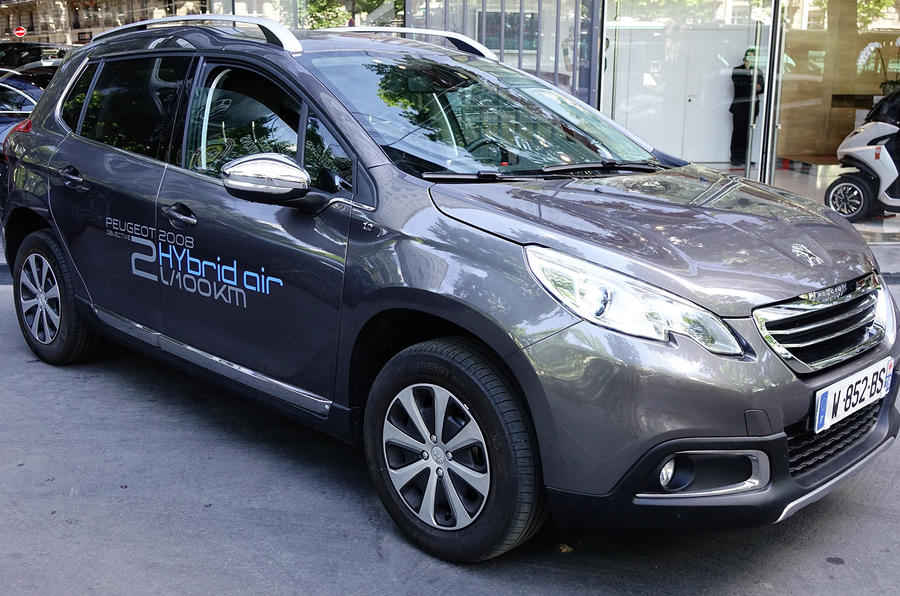What is it?
Underneath the skin of this Peugeot 2008 is Peugeot-Citroën’s new Hybrid Air transmission in prototype form. The French company says the new transmission is a big part of the company’s attempts to put a production car capable of an average 141mpg on the road by 2020.
Until now, a ‘hybrid’ car has been one that combines an internal combustion engine with an additional electric drive motor and a battery pack. PSA’s solution is simpler and claimed to be far more cost-effective than the petrol-electric drivetrain pioneered by Toyota and others.
While the system is dubbed ‘Hybrid Air’, it might be better described as 'Hybrid Hydraulic'. This 2008 is primarily powered by the company’s 1.2-litre, three-cylinder, naturally aspirated 81bhp petrol engine. A new gearbox has been designed for the car using a planetary gear set (similar in principle to the classic Strumey-Archer three-speed bicycle hub gear).
This type of gearbox allows power to be split between the front wheels and a pair of hydraulic pumps, which are mounted between the transmission casing and the nearside front wheel. Mounted along the centre tunnel of the car’s floorpan is a high-pressure cylindrical tank. This tank contains a bladder filled with a combination of air and nitrogen.
Under the rear seats is a conventional fuel tank while under the boot floor is another cylindrical tank, designed for low-pressure storage. The two cylindrical tanks and the hydraulic pumps in the transmission are all connected by a series of pipes to allow hydraulic fluid to flow around this closed-loop system.
While the engine and transmission can power the front wheels in the conventional way, it can simultaneously use the hydraulic pump to force oil into the centre tank. The oil compresses the air and nitrogen bladder as it is forced into the tank, creating an oil pressure as high as 220bar.
When the car is coasting downhill, with the engine idle, the planetary transmission can also turn on the hydraulic pump and pressurise the centre tank with oil.
When the centre tank is fully primed with hydraulic fluid under high pressure, it can be released back through the hydraulic pump, which then acts as a drive unit to turn the front wheels without assistance from the engine.
The depressurised oil is returned to the low-pressure tank under the boot floor before being drawn back into the hydraulic pump then the driver is coasting or heading downhill.























Join the debate
Add your comment
Not yet there
A pitiful 15kg weight difference, 3 cyl 1.2 litre ICE and 200 metre travel on hydraulic power are hardly competitive with a Prius just check the figures. Its old technology, tanks, valves, pumps, hoses, pipes, that make it cheap but will customers want second best in efficiency.
One comment from above mentioned lack of fire risk compared to an electric hybrid which I find absurd since unaware of any. All conventional fuelled cars including the Peugeot are potential fire risks which don't seem to be a problem for buyers or solicit comments.
If you read the article it
Fiat Chrysler
Mixed up